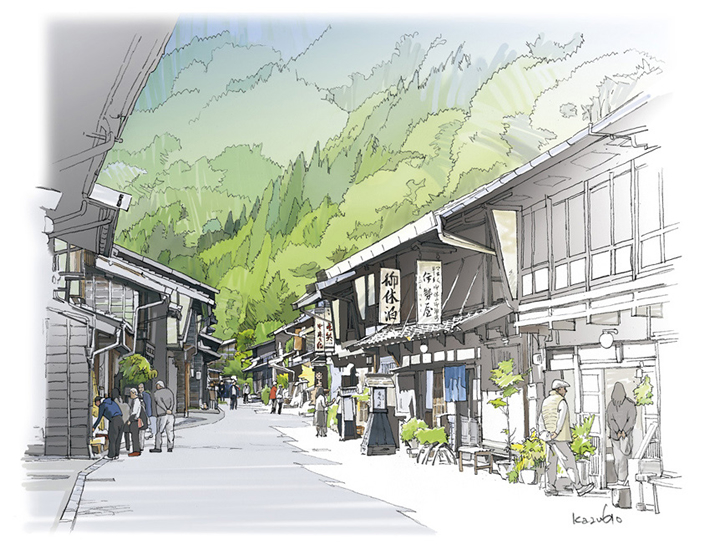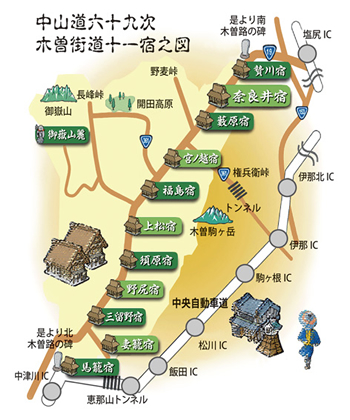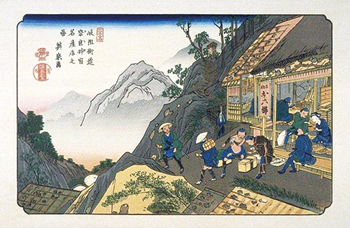- Home >
- Japanese Scenery >
- Narai-juku in Early Spring >
Narai-juku in Early Spring
Narai-juku on the Nakasendo Route, Shiojiri City, Nagano Prefecture, Japan


Narai, one of the 69 stations on Nakasendo Route (by Keisai Eisen)
On land where Narai set the home for his powerful clan, Tokugawa Ieyasu designated Narai-juku as a station on the Nakasendo Route in the year 1602. People and horses were always ready for official travelers such as Bakufu government staff, and for lords traveling between their alternating residences. Narai-juku worked providing people and horses on request, and played a role in communications.
Among the 11 stations in the Kisoji section of the Nakasendo Route, it has the highest elevation, and is the second mountain pass when coming from the north: It is a station town before Torii Pass. It flourished with travelers coming and going on the road. So it was called "Narai Thousand Buildings", the busiest station on the Kisoji Road.
At Narai-juku, the entry rising to Torii Pass has Shizume Jinja Shrine as the entry towards Kyoto. The town stretches for about one km along Nakasendo Route which runs along the Narai River. It is Japan's longest station of that era.

Ukiyo-e Image: Provided by Kisoji Art Museum
Here, town development has used the landscape such as hatago building lamps and thousand lattices, for strongly left vestiges of the Edo Era. It gives a feeling of timeless scenery.
Local residents have become more interested in the town's scenery. Their eagerness and the station town's special qualities were recognized, so the national government selected it as an Important Preservation District for Group of Historic Buildings in 1978.






